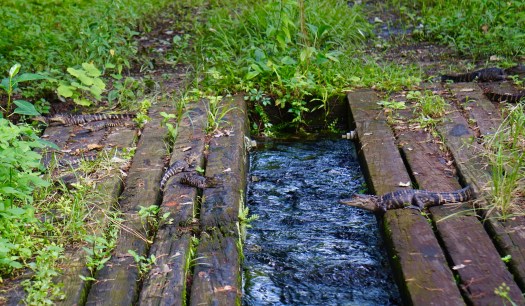
Before naturalists could easily hold a professional-grade camera in the palm of their hands, they would often preserve flowers and leaves in botanical scrapbooks. This practice requires patience, planning and sweat equity and serves a variety of interests, both scientific and sentimental.

Whatever their purpose, the practice is less common these days, as we opt for a digital photograph and leave the flowers for the next nature seeker to enjoy.
On the off chance that you do not have a bookshelf full of botanical scrapbooks to peruse, I hope you enjoy reflecting on this fascinating hobby by flipping through a recently uncovered scrapbook found at our office.
These pages evoke hours spent walking through the pine flatwoods and marshy trails, gathering specimens to press and add to the collection, presumably in the comfort of home. The pages tell the story of the naturalist, finding joy achieving another seemingly small, but wholly significant goal, that of ticking-off another flower from their bucket list. Viewers may now admire the carefully clipped and photographed plants documented in this native and invasive plant collection.
Although, rules and regulations today prohibit the collection of any plants within CREW, we do wish to honor the past. In fact, some botanical researchers still utilize this method for scholarly pursuits and I know that on occasion my son will secretly pick a flower as a gift. However, I am quick to use this as a teaching moment, letting him know that those plants are there for a reason. The bears eat the berries and the bees drink the flower’s nectar. More often than not these days, he asks for my phone to snap a picture, which I can then keep forever.
Academics and toddlers aside, please do not pick the flowers on the CREW trails, take a picture and leave the plants for the pollinators! Although, if you’re really keen to start a scrapbook collection of your own, try growing some of the native plants you see at CREW in your own backyard, then pick and press away!
We hope that you have enjoyed these pages digitized in honor of the plant’s beauty and also the collector’s personal investment, from what I am calling, the Blue Botanical Scrapbook. Enjoy this walk down memory lane and if you ever want to take a look through these archives in person, let me know, I’d be happy to un-shelf them for you!
One more thing. In case you’re wondering, we haven’t been able to track down who made these scrapbooks, so if you have any clues to the mystery, let us know!
Further research
Excellent article written on this subject from the Florida Museum Herbarium and link to the preserved plant collection at University of Florida and University of South Florida.












































